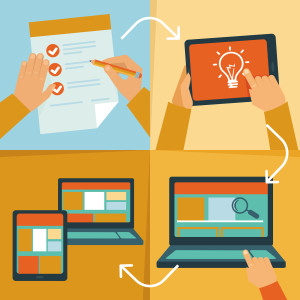Five Ways To Promote Literacy
 Literacy is an important skill to have to promote both personal and professional growth. However, according to a 2013 study by the U.S. Department of Education and National Institute of Literacy, 32 million adults in America, or 14 percent, cannot read. Twenty-one percent of adults read below a 5th-grade level, and 19 percent of high school graduates can’t read at all. For children, a lack of books in the home is also linked to lower reading scores and less success in school. In an Annie E. Casey Foundation report, students who can’t read proficiently by third grade are four times more likely to leave school without a diploma than proficient readers.
Literacy is an important skill to have to promote both personal and professional growth. However, according to a 2013 study by the U.S. Department of Education and National Institute of Literacy, 32 million adults in America, or 14 percent, cannot read. Twenty-one percent of adults read below a 5th-grade level, and 19 percent of high school graduates can’t read at all. For children, a lack of books in the home is also linked to lower reading scores and less success in school. In an Annie E. Casey Foundation report, students who can’t read proficiently by third grade are four times more likely to leave school without a diploma than proficient readers.
This is why it is important for everyone to promote literacy in their community and among their friends and family members. Here are five simple ways to do it:
- Set an example and make a routine: I committed myself to reading for at least one hour a day, preferably before I go to bed when it is most relaxing. Even on days when I can’t get to read for that one hour, I find times in other ways. I always have a book on hand, whether it is a physical book or an ebook on my mobile or tablet ready to read anywhere I go. If I am on the bus or train or waiting in line, I use the time to read even if it is just one or two pages at a time. It is especially important to set a reading routine with your children like a story time. When your kids see you reading, you are setting an example for them.
- Discuss books with others: Being around other people who like reading supports literacy. A book club allows you to socialize with other like-minded people while discussing the same book. Also, sharing your book reviews on a blog or on an online forum like GoodReads or Amazon opens you up to the shared wisdom and thoughts of others around the world!
- Give the gift of literacy: I love giving books as gifts. I try to find out what types of books the recipient might like and get them the book or at least a gift card for an independent bookshop or Barnes and Noble.
- Give away books: Every year I go through my extensive library and give away some books to either my local public library, thrift shop, or schools in need of books. You should also consider donating to organizations that specialize in giving away free or low-cost books to marginalized populations, like prison book programs, literacy programs for people with disabilities and low-income or rural communities, or international NGOs that send books to developing countries.
- Support literacy causes: Whenever possible, donate your time or money to support literacy programs, campaigns, and fundraisers. Theses causes go back into your community to help someone else in need.


